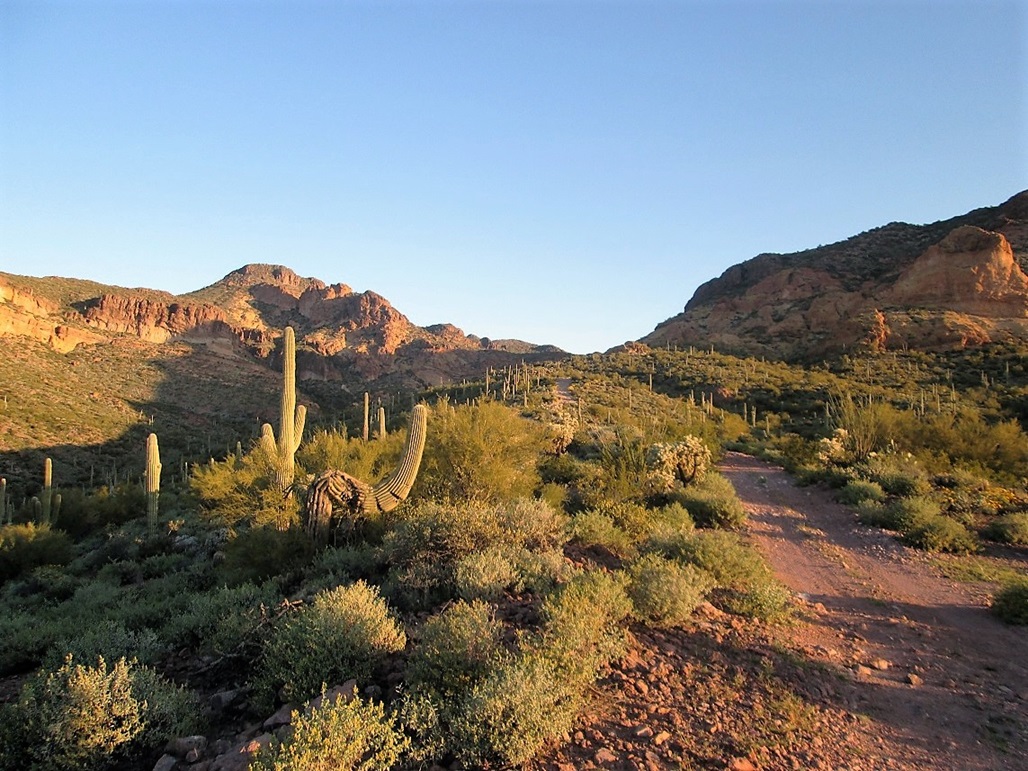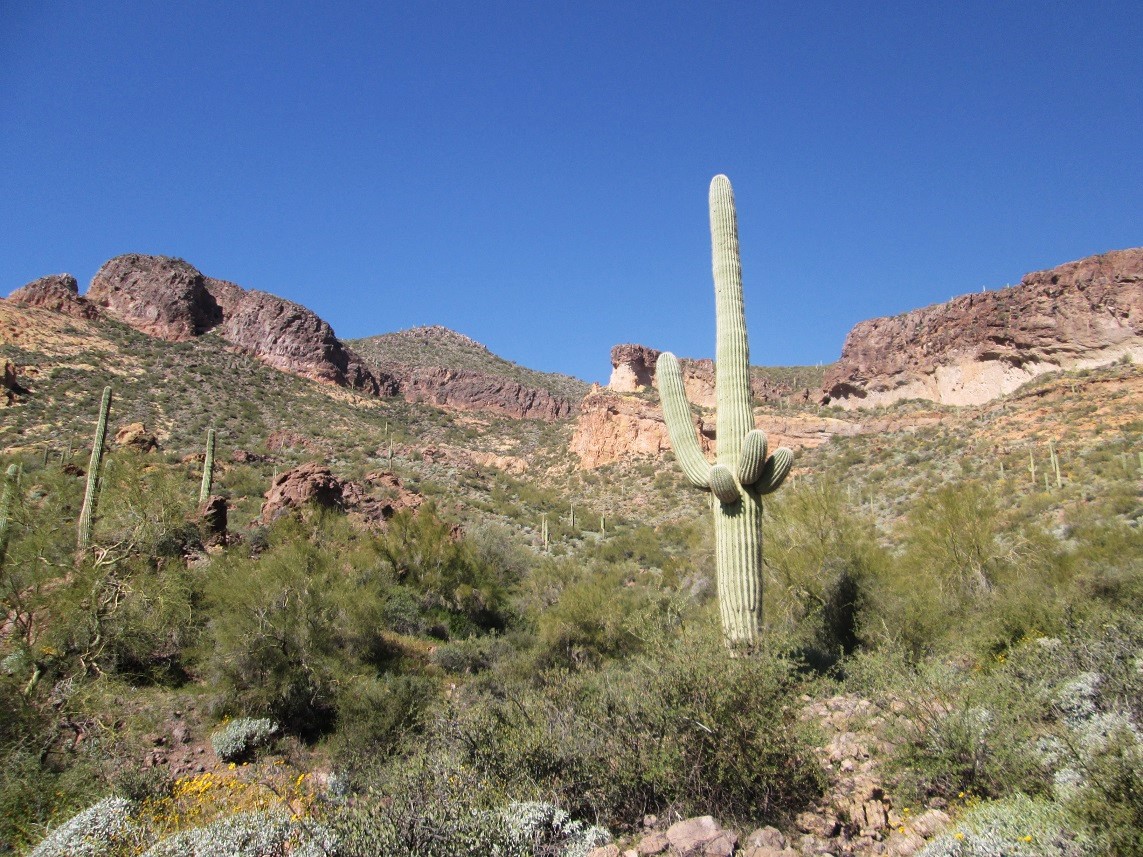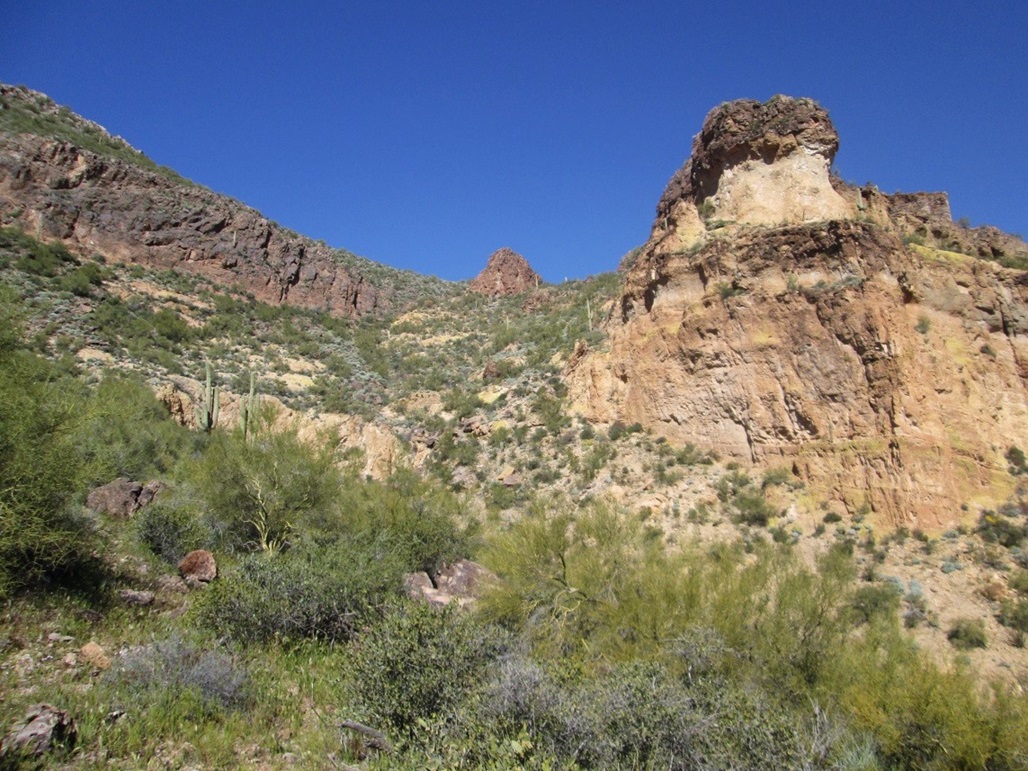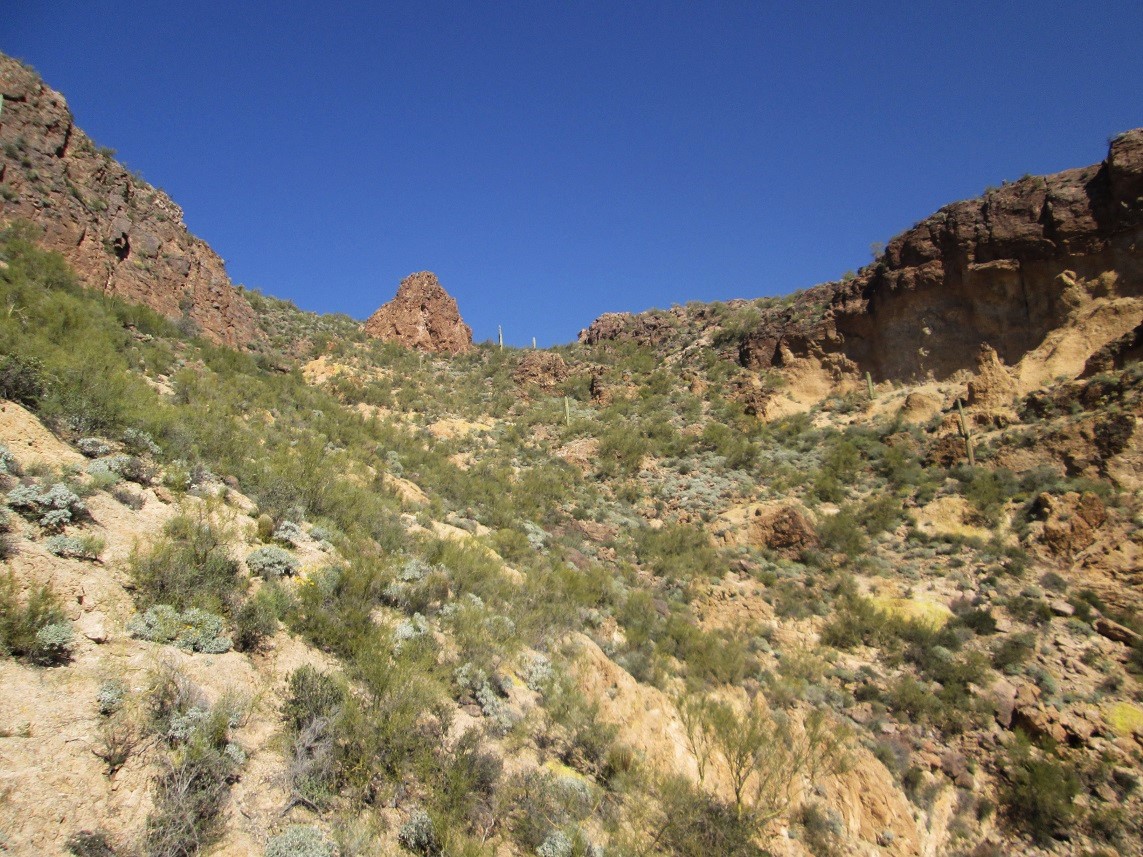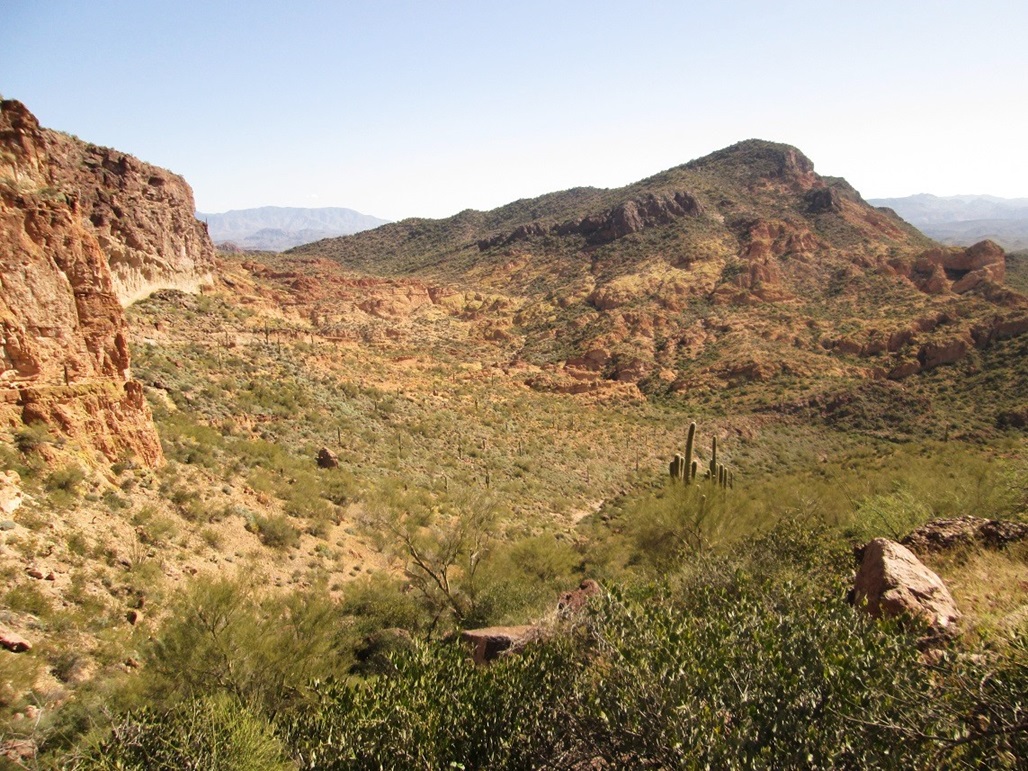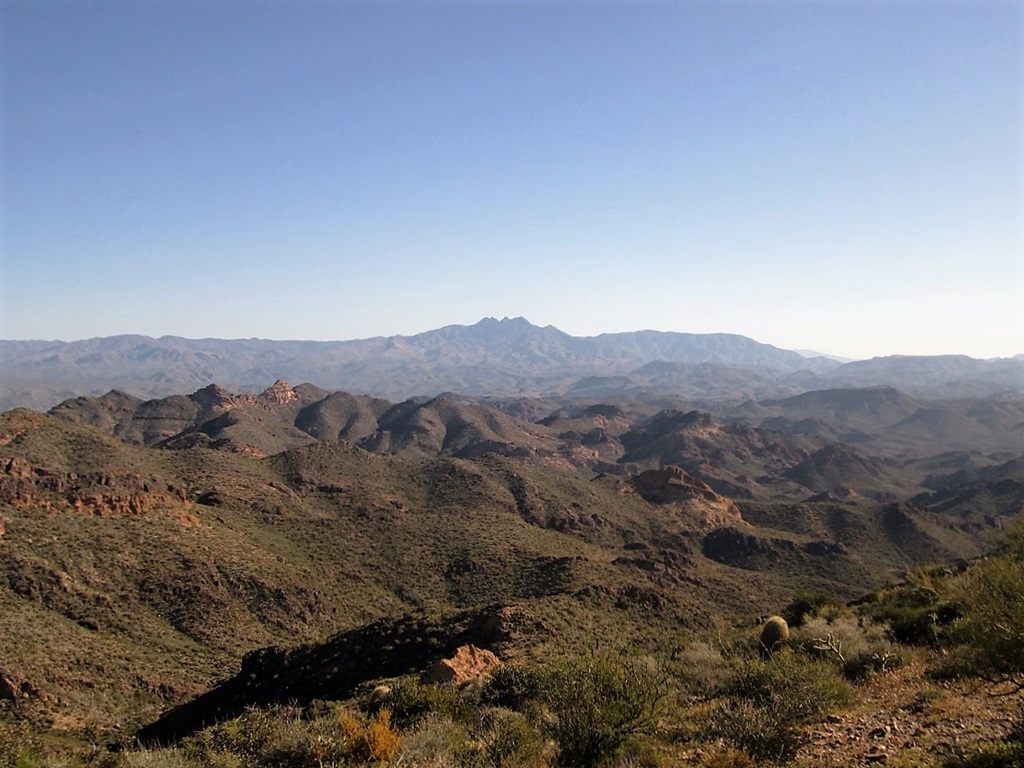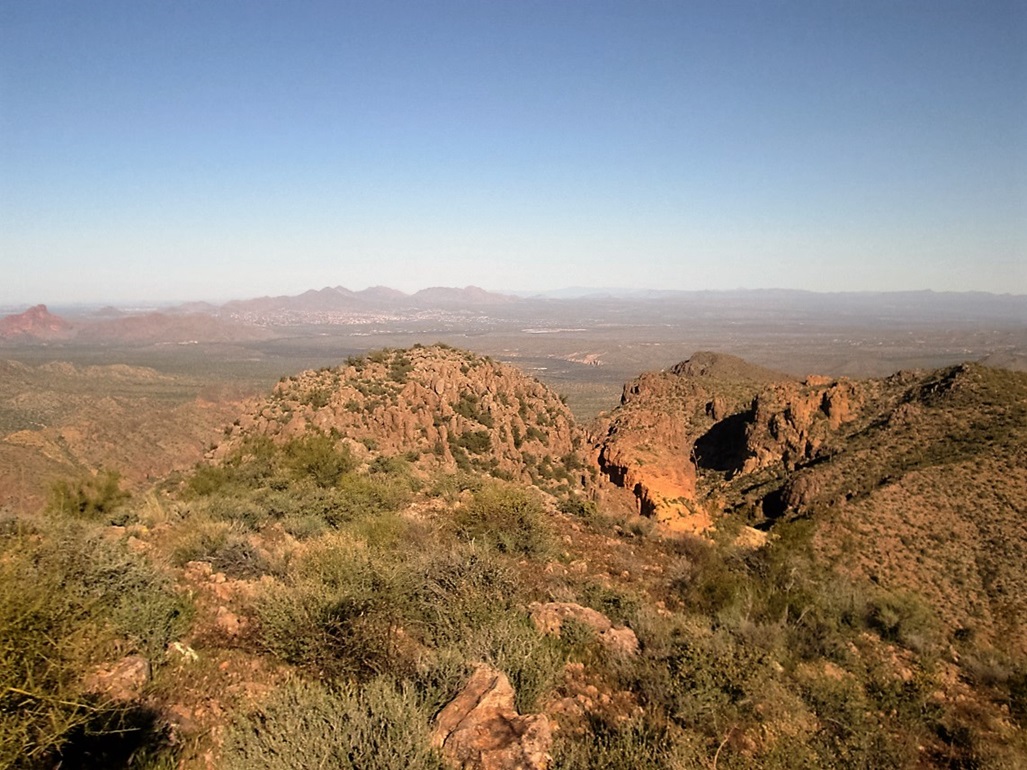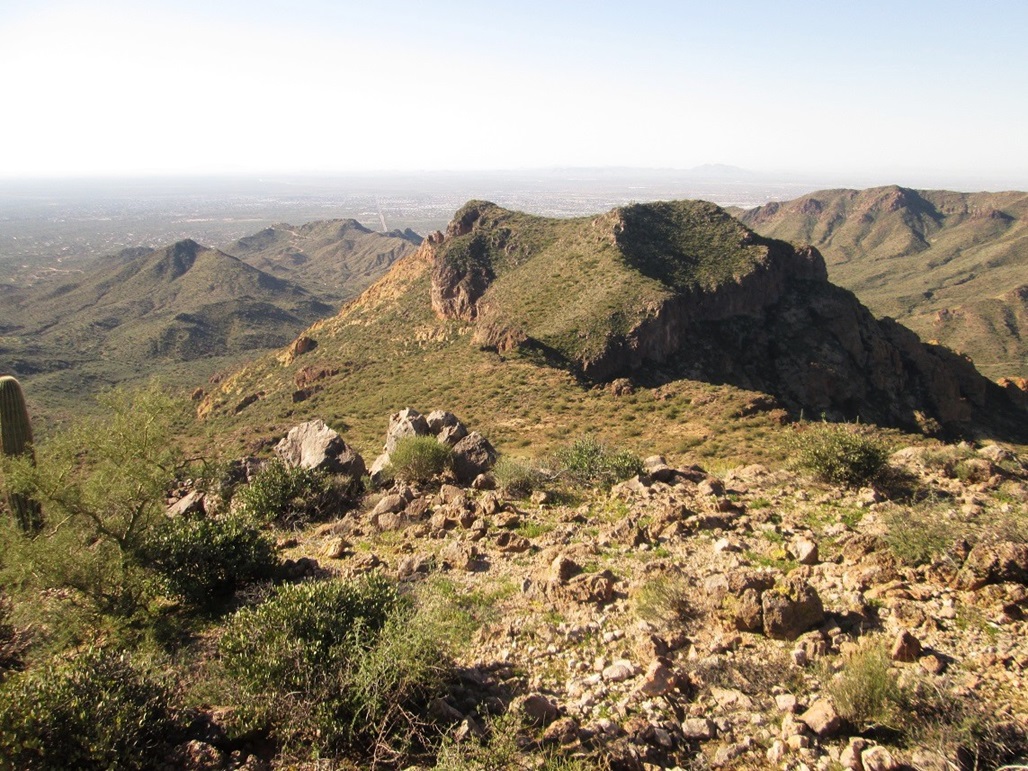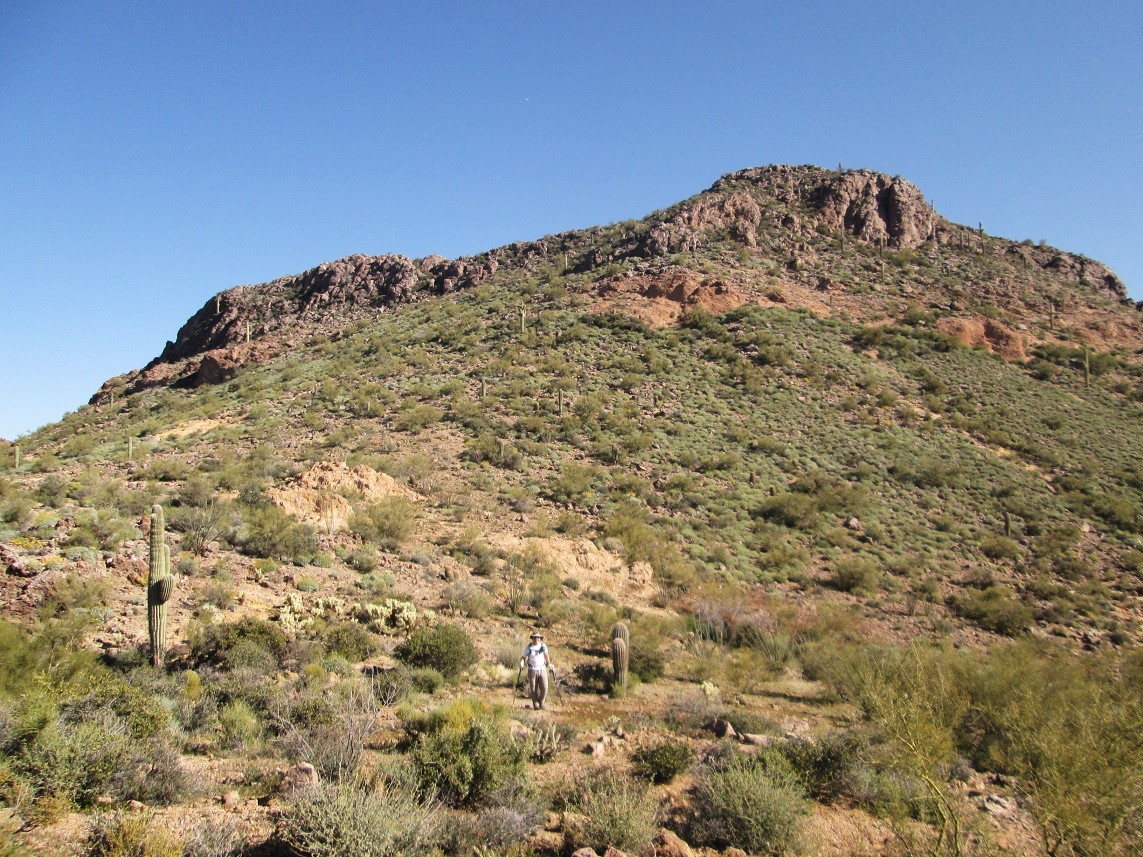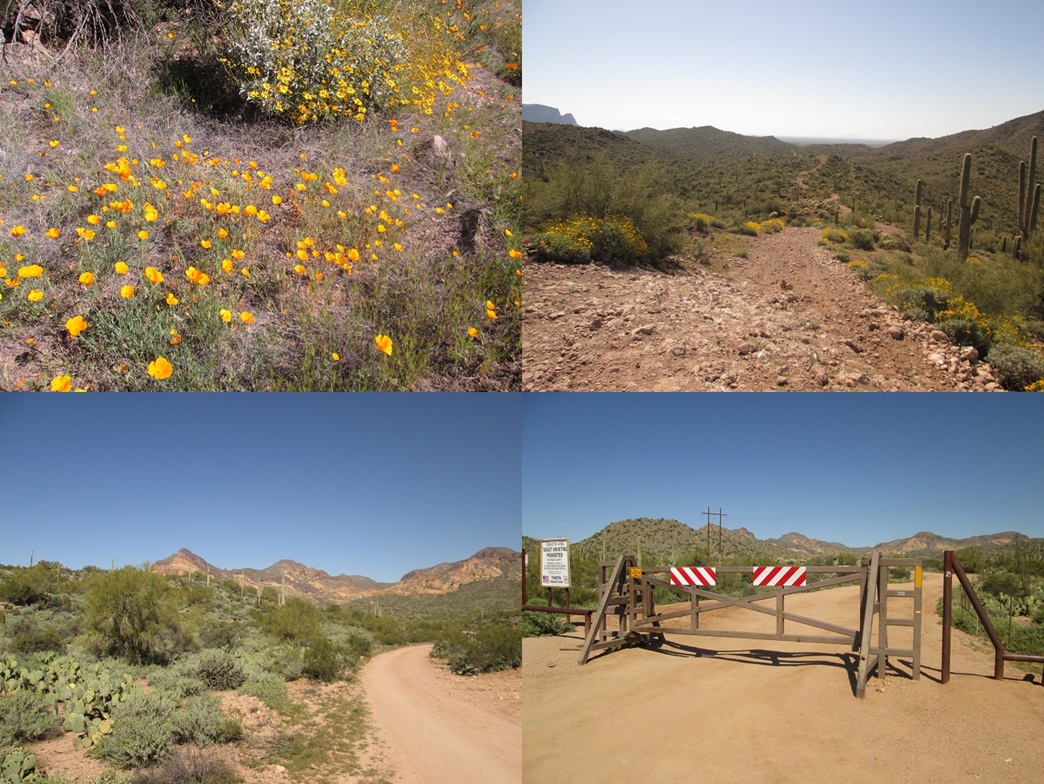
The Mountains of Arizona
• www.surgent.net
|
| Dome Mountain |
• Highpoint: Goldfield Mountains • Tonto National Forest • Maricopa County |
|
Date: March 8, 2015
• Elevation: 3,381 feet
• Prominence: 1,201 feet
• Distance: 6.6 miles
• Time: 4 hours and 45 minutes
• Gain: 1,747 feet
• Conditions: Pleasant and sunny
• Teammate: Scott Peavy
Dome Mountain is the highest point in the Goldfield Mountains in eastern Maricopa County, south of the Salt River, north of Mesa and Apache Junction, and west of Highway AZ-88. This range is managed by the Tonto National Forest, and the main feature of the peaks in this range seems to be cliffs. The most visible (and "famous") of these peaks is Pass Mountain, home to Wind Cave, a popular day hike in this area. Pass Mountain is the westernmost mountain of the Goldfield Range. The rest of the range lies east of Pass Mountain.
Scott Peavy asked me to join him at the last minute, as I had no plans otherwise for this weekend. I met him early at his house and we drove to the trailhead, located on the southern forest boundary, driving through a residential area to get there. I didn't pay close attention to the roads, but we were on McKellips Road at one point, then Wolverine Pass, then some lesser roads such as Cactus Drive. We rolled in to the parking area at 6:30 a.m., where a couple cars were already there. The day was clear and calm, slightly chilly at this hour, although it would get warm later in the day.
Dome Mountain sits roughly in the middle of the range, about two miles north of where we were parked. Tonto Forest Road 10 starts here at a gate, which can be opened if you get a permit and the combination from the Forest Ranger in Mesa. Forest Road 10 cuts north-south through the range, meeting the Bush Highway on the other end (near the Salt River). We would hike some of the road, but it would not be the main route to the peak. It wasn't that far to hike anyway, so we felt no need to get a permit.
We started walking at 6:40 a.m., following FR-10 for about a quarter-mile. When it started to bend left (west), we found FR-1356 and followed that north through a sandy stream bed, then up to a soft pass between two hills. Although we could see Dome Mountain from the trailhead, we had much better views here, now unobstructed by foreground hills.
We then descended downhill, losing about 60 feet, to a basin where FR-1356 bent hard-right, now heading east. We angled left onto a good-looking road that was not shown on the map. We followed this road west a little, then turned right onto a lesser road heading north. There were no road markers on these last two roads. This last road was marked by pink ribbon tied to a bush.
We followed this road north past a pile of mine tailings (or possibly a large earthen tank). This road was much rougher than the rest. It gained onto a ridge, then angled right, and followed the spine of this ridge, eventually reaching a highpoint below Peak 3134, which is east of Dome Mountain. Then the road dropped into a ravine, losing about 150 feet and ending at a sloping "open area". Bringing a vehicle down this final portion would be foolish, as there'd be no safe way to turn around. These roads are visible on the satellite images of the area.
To here, we had hiked 1.8 miles in about an hour. We could see the two summits of Dome Mountain: its lower southern summit, and the higher northern summit. The rest of the hike would be cross-country. We eyed the terrain and tried to plot a route that would minimize the various cliffs that lined the slopes up ahead.
We dropped into the ravine, then immediately up the other side, now on a very-gently sloping ridge with brush, but not so thick that it slowed us. There were open areas and lanes to weave through. We slowly worked westward, getting to a point where the slopes above the ravine started to steepen.
Looking ahead, there was a yellow-colored cliff band that had been visible since we left the road. We couldn't see how the terrain looked on its left side from below, so we went right by default. We crossed into the ravine, then started up the slopes aiming right of this cliff band, and directly below a gigantic cliff band with an impressive overhang.
This portion went slow, due to the very loose slopes. The slopes were covered in marble-sized rocks that rolled at the slightest pressure. At one point, I slipped and went for an uncontrolled slide of about six feet, stopping only when I stuck my feet into a bush in the way. Otherwise, there was no way to stop the slide!
We labored through this stretch, finally getting above the rubble and the cliff band, and onto more solid terrain. It was still brushy here with sloping rocks, but the scree wasn't as severe. Looking up, we were aiming for a rock fin in a notch on the skyline. After about fifteen minutes and gaining about 400 vertical feet, we were now at this rock. We went below it and emerged onto the ridge itself, now in the shade where we took a small break.
We actually found a few cairns here! We followed them through a small maze of rocks to emerge onto a slightly-higher bench, now with views of the north summit. From here to the top, the going was very easy and straightforward. We hiked by sight across the ridge, dodging some rock bands along the way. We were on the saddle below the actual summit. We followed a nice slope on the peak's west face that avoided the small cliffs, and emerged directly to the summit, arriving at a shade before 9 a.m., a two hour, 15 minute ascent.
The day was so nice, we took a longer than normal break up here, shooting images of the surrounding mountains, exploring the summit ridge, and pawing through the log book, which held just a handful of names over the years, some going back before 2000. We spent about 30 minutes up here. We had excellent views of the Four Peaks, of Weaver's Needle and the Superstition Mountains, and looking north and west, of the McDowell Range and Pass Mountain. The day was a little hazy, so the farthest-away peaks were barefly visible, but we could still make out such peaks as Newman Peak, Table Top and even Gu Achi, which we climbed just a month earlier.
The descent went well. When we got to that rock fin, we decided to angle across the slope and try to get to the opposite side of the lower cliff band, rather than deal with the bad scree we had coming up. This went well, but slow, and I found myself using the five points of contact technique on some of the slopes. As nasty as scree can be, it can be fun to boot-glissade on it, although a lot got into my shoes. We took another break above this cliff band, since the rest of the hike out would be a lot easier overall.
We hiked down the slopes to the road, then followed the road out, just putting one foot in front of the other. When we got to that first "soft pass" mentioned earlier, we heard a man's voice coming through a p.a., then saw a tour vehicle rumbling up the road. This was a big truck outfitted with seats and a canopy, while the driver talked about the area. They seemed surprise to see us, and we were very surprised to see them. This was a first for both of us: encountering a tour vehicle on a hike out.
We were back to Scott's vehicle a little before 11:30 a.m., the hike out taking just under two hours. By now it was warm, but not unpleasant. We got rolling and celebrated with sandwiches in town.
I was happy to succeed on Dome Mountain. It was one of those peaks I never paid much attention to beforehand, so when Scott suggested it, I was eager to finally try my luck with it. Overall, it was an easy hike. Route-finding isn't that difficult, but some patience for loose slopes will be needed.
|
|

